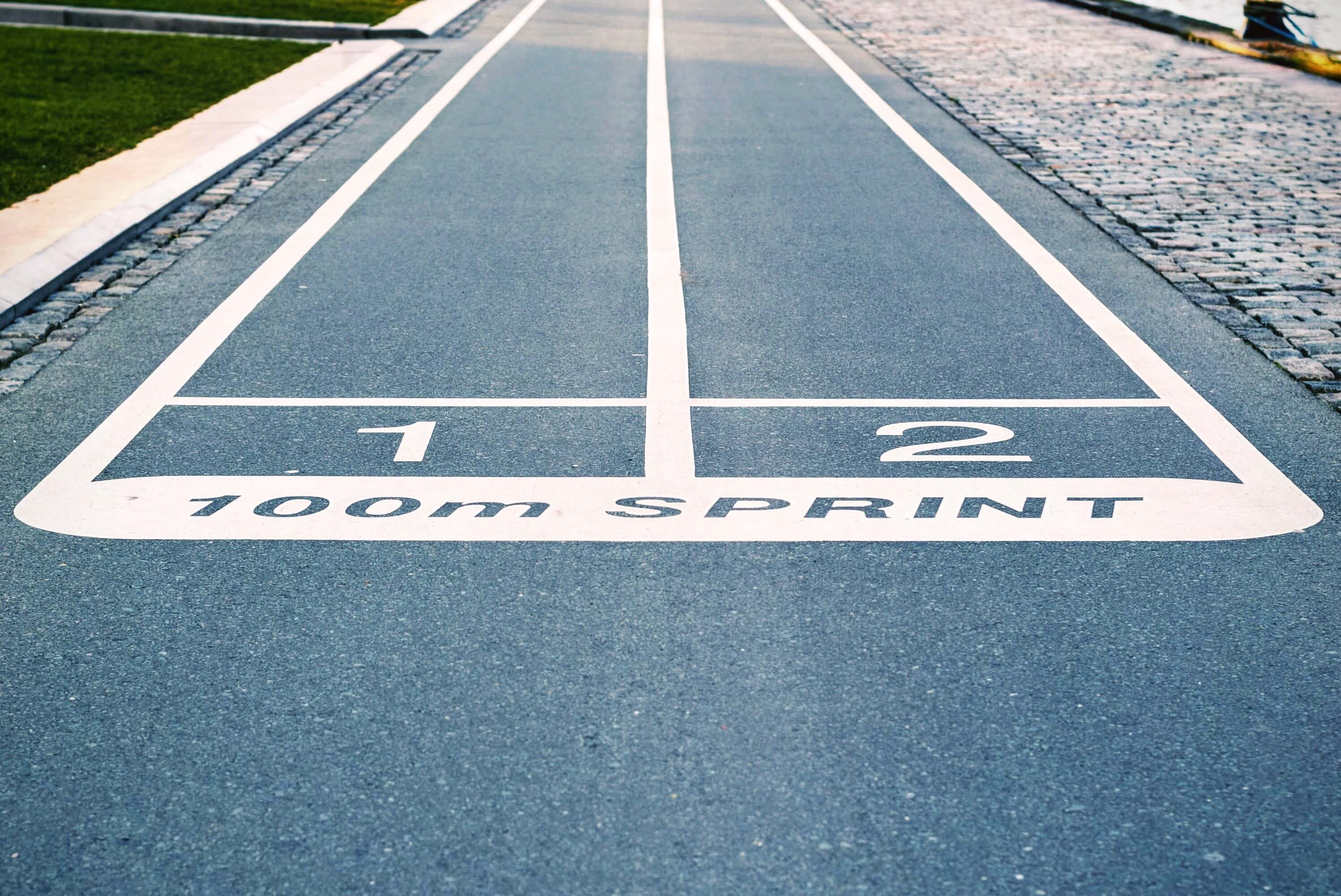Intervals, Repeats, Ladders and Learning Track Terms

Many runners find their passion for the sport without ever joining a track and field team. And while it’s never too late in life to start running, those who weren’t track stars in high school or college are missing out on a major way to increase speed: track workouts.
Tracks aren’t just a convenient place to run (since they typically located at schools). They also aren’t as boring when it comes to choices in courses than you might think. Even more importantly to add is that running on a track isn’t as intimidating as most people think. Sure it can be scary to explore this uncharted territory, but these track workout tips will have runners feeling like an Olympic star after crushing their workout.
Need For Speed
Many runners just hit the pavement, but running on a track switches things up and is best for speed work. Track workouts are beneficial for both seasoned and beginner runners. That’s because it is one of the best ways to decrease race finish times. Why? Because of sprints.
Sprinting teaches the legs to move faster. Sprints combined with interval training is the perfect combo to increase speed.
Think of the track as the best place for interval training. And running intervals makes you a faster and stronger runner. Interval training consists of short burst of running that are full of intensity and speed (think really fast), followed by a period of recovery (think slow) to get the heart rate back down. Then repeat.
Interval training builds speed and endurance by conditioning the body to burn more lactic acid more efficiently, increases cardiovascular efficiency, without overtraining.
How To Run Track Intervals

So how does one run intervals on the track? Start with a 15-20 minute warmup to get the muscles ready and to prevent injury. This means running the entire track at least once. Then it’s time for intervals.
The distance can be anywhere from 100 meters to 400 meters. Just think the shorter the distance, the faster to run. A good way to run intervals on a track is to actually use the track. Run the straightaways, which are the straight sections of the track. Sprint at each of the straightaways at a high-intensity level, then jog or run at an easy pace the curved sections for recovery and repeat.
Start off with an entire lap around the track. Then focus on making each straightaway spent faster and add more laps the more advanced or further along in training the runner becomes.
Run 6 x 100 meters, 6 x 200 meters for beginners, or 8 x 100 meters, 8 x 200 meters for intermediate runners.
Time For Mile Repeats
Repeating sections of sprinting and recovery at an easy pace is interval training. But another track workout is running mile repeats. These are great for reaching a PR at the next race. Mile repeats can be done when road running or on the track. There are a few ways to do mile repeat workouts.
First do the race pace test prior to workout. This consists of running a timed mile on the track, or four laps. Note this time, and aim to make it faster each month as training progresses.
Now it’s mile repeat time. A good starting off track workout is run two miles (8 laps) at 5k, 10k, or half marathon pace. Then finish at an easy pace for a half-mile (2 laps). Plan this track workout in once every two weeks leading up to a 10k or half marathon.

Mastering The Ladder
Another good track workout is running the ladder. Ladder workouts are all about training to run fast on tired legs. It consists of intervals that go and go down in terms of time or distance.
There are many different combinations of ladder workouts. A good place it starts is the following: 5 minutes of warm up, 400 meters run at 5k pace, recover for 400 meters. Then the distance ascends. Repeat, but this time run 800 meters at 5k pace, recover for 400 meters, run 1200 meters at 5k pace, recover for 400 m and then cool down at an easy pace for 5 minutes.
Another version of this is to warm up, and then run 1-2-3-4-5-4-3-2-1 minutes at 5k race pace. Just remember at add recovery time in between each ladder, and increase recovery to be 30 seconds, 60 seconds, 90 seconds, etc. and then back down again.
Thing To Know About The Track
It will take a few runs on a track to get used to pacing. But it also takes time to get familiar with the track lingo and general information.
Tracks are typically 400 meters. This means four laps is just about a mile.

When the track is crowded, run counterclockwise. Just remember to always lead to the left. This is track protocol. Faster runners stick to the inside lanes, whereas slow runner should run on the outside lanes. This is for safety reasons so runners can pass without colliding.
Other things to know is the difference between intervals and repeats. The first includes sprints with recovery in between as mentioned above. The latter is fast portions of a run that are repeated with recovery as well.
Splits are the time it takes to complete a distance. Runners often aim to get negative splits, meaning each mile is faster than the last. Check the pace after each lap when on the track.
Remember that breaking up the track into section helps to keep the runner focused, while intervals keep things less than boring. Even if challenging, the hard work track workout does pay off.
Sources
- , Here’s Everything You Need to Know About Running on the Track, Running Website
- , Interval Training Workouts Build Speed and Endurance , Health Website
- , How to Use Track Workouts in Endurance Training, Fitness Website
- , How to Master the Track and Have More Fun on Your Runs, Health Website
- , Workout of the Week: Track Ladders , Running Website
Latest Articles
 Is Running on a Treadmill Easier Than Running Outside?Runners have their own preferences, whether it is treadmill running, running outside on the road, or exploring trails. So...
Is Running on a Treadmill Easier Than Running Outside?Runners have their own preferences, whether it is treadmill running, running outside on the road, or exploring trails. So... Is It OK to Use Trail Running Shoes on the Road?While trail running shoes can be used on roads, especially in situations where a runner encounters mixed terrains or pref...
Is It OK to Use Trail Running Shoes on the Road?While trail running shoes can be used on roads, especially in situations where a runner encounters mixed terrains or pref... How to Fix Sore Quads After Running?Rest, ice, gentle stretching, and over-the-counter pain relievers can help soothe sore quads after running. Also, ensure ...
How to Fix Sore Quads After Running?Rest, ice, gentle stretching, and over-the-counter pain relievers can help soothe sore quads after running. Also, ensure ... 10 Fruits With The Most Electrolytes to Replace Sports DrinksThese fruits are high in electrolytes such as potassium, magnesium, and calcium, essential for hydration, muscle function...
10 Fruits With The Most Electrolytes to Replace Sports DrinksThese fruits are high in electrolytes such as potassium, magnesium, and calcium, essential for hydration, muscle function...

